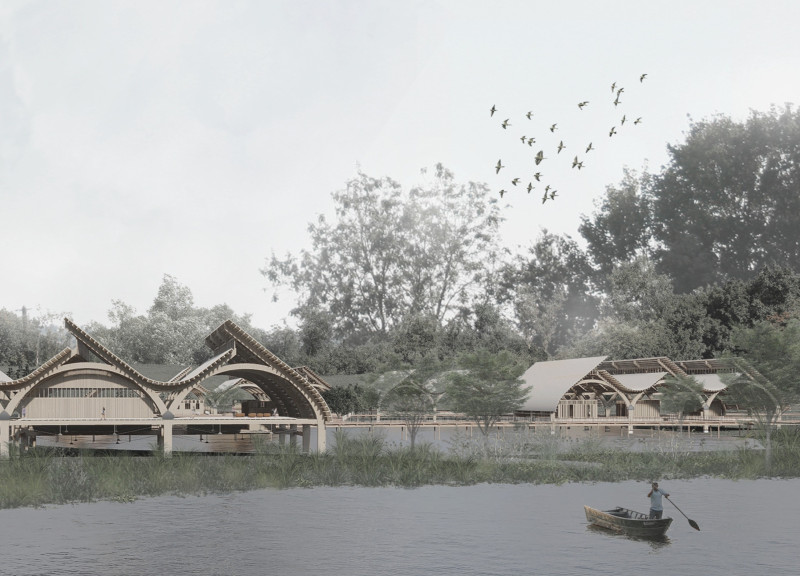5 key facts about this project
At first glance, the architectural design offers a balanced composition of volumes that exhibit a clear organizational framework. The facade showcases a combination of materials, including concrete for the structural elements, glass panels that allow natural light to permeate interior spaces, and timber accents that soften the overall appearance and add warmth. This careful selection of materials highlights a commitment to sustainability and environmental responsiveness, using durable and locally sourced resources that ultimately enhance the building’s longevity.
The interior organization of the space is equally well-conceived, with an open floor plan that promotes ease of movement and flexibility. The layout encourages social engagement, with communal areas strategically placed to serve as gathering spots. The design effectively considers sound management and lighting, utilizing acoustic panels and large windows that foster a pleasant atmosphere while maintaining privacy in more intimate spaces. Increased interaction between indoor and outdoor environments is achieved through thoughtfully positioned terraces and green areas, promoting wellness and connectivity to nature.
In terms of unique design approaches, the project showcases a contemporary interpretation of traditional architectural forms. While it acknowledges the historical context of its surroundings, it does so through a modern lens, offering a fresh take on familiar elements such as pitched roofs and cascading terraces. This blend results in a cohesive and visually appealing design that stands out without detracting from its context. Furthermore, the project's integration of sustainable technologies, such as rainwater harvesting systems and energy-efficient HVAC solutions, demonstrates a forward-thinking approach, aligning with current architectural ideas that prioritize environmental stewardship.
Landscaping plays a vital role in the overall design, with native plant species carefully chosen to complement the building's aesthetic while requiring minimal maintenance. This choice not only supports local biodiversity but also reinforces the project's commitment to sustainability. The seamless transition between built and natural environments is indicative of a deeper understanding of ecological networks within urban contexts.
Throughout the design process, the architects have prioritized user experience, ensuring the building is accessible to all and designed to accommodate various activities. Features such as wide pathways, ramps, and thoughtfully placed seating areas contribute to this inclusivity, inviting a broad spectrum of community members to engage with the space.
As the project continues to evolve, further exploration of its architectural plans, sections, and detailed design elements will reveal a wealth of insights into its conceptual underpinnings and the collaborative effort behind its realization. Engaging with the full spectrum of architectural designs and ideas presented in this project will undoubtedly provide a richer understanding of the innovative approaches employed and the potential impacts on its community. Readers are encouraged to delve deeper into the project's presentation to appreciate the intricate details and broader architectural vision it embodies.























